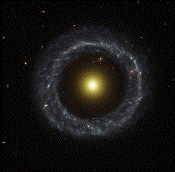
Astronomy
Vagabonds: coments and asteroids

Weblecture
Vagabonds of Space: Comets and Asteroids
Never Aggregated: The Asteroids and Comets
- Introduction
- Asteroids and Comets
- Naked Eye Observation
- Exploration
- Orbital characteristics: revolution and rotation
- Magnetosphere
- Atmosphere
- Surface
- Structure and Core
- Formation
- Discussion Questions
- Optional Website Reading
Introduction

And Easter was on the fourteenth day before the Kalends of May. Then it happened that all through England such a sight in the heavens was seen as no man had seen before. Some men said that it was the star Comet, that some men call the long-haired star; it appeared on the even of Letania Maior, that is the eighth day before the Kalend of May, and so shone for all seven nights.
— Unknown, Anglo Saxon Chronicle, 1066
Asteroids and Comets
This is where we get to discuss the objects that don't fit into the groups we've already discussed: planets, their moons, and trans-Neptune dwarf planets. The asteroids and comets are solar system bodies have not cleared their areas of planetesimals, and they are not large enough to collapse into a sphere under their own gravity (with the exception of Ceres).
Take the time to look through the following table, which collects information from a number of sources and allows you to compare the discovery and composition of three classes of asteroids and two types of comets.
- As expected, the likelihood of atmospheres and icy deposits is increased by distance from the Sun were lower temperatures allow low mass bodies to retain gas particles.
- All classes of objects have been subject to unmanned space probes; the NASA probe Dawn will explore the dwarf planet series and the large asteroid Vesta in the next six years.
- When the planetesimals breaks up under title forces, fragments from the crust are likely to be rocky or icy, fragments from the mantle are likely to have recognizable terrestrial rocky structures like olivine, while fragments from the core will be high in iron deposits.
- Asteroids are likely to have nearly circular orbits, since they are constantly correcting each other; comets have highly eccentric orbits.
- This space junk may very well hold the critical clues to the formation of the solar system, especially since some asteroids appear to be left over from the original condensing stellar cloud, and have not been subsequently changed by gravitational pressure.
| Main Belt Body Ceres Dwarf Planet |
Main Belt Bodies (Vesta, Pallas, Hygiea) |
Apollo asteroids ~ 240 Near-Earth Objects crossing E and and Earth's orbit Amor asteroids: ~2000 Near-Earth Objects not crossing Earth's orbit |
Short-period Comet Tempel 1 |
Intermediate period Halley's Comet |
Naked Eye Observation | ||||
| Discovered in 1801 by Giuseppe Piazzi. Size: 975*909km |
Discovered by ground-based telescopes (Pallas - 1802, Juno - 1804, Vesta - 1807) | Apollo discovered 1832; not seen again until 1973. Largest: 1866 Sisyphus, 10km in diameter. | Discovered by William Tempel, 1867. Lost due to orbital perturbations by Jupiter which changed periodicity; rediscovered/identified in 1972. | Period determined by Edmund Halley in 1705; corresponds to recorded comet observations as early as 240BC. |
| Cuneiform tablets recording the appearance of Halley's Comet around 166 A.D. | 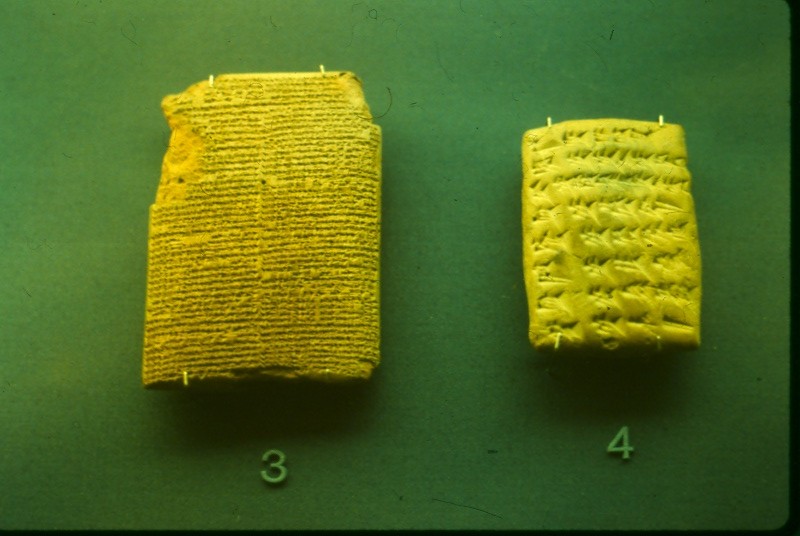 |
|||
Exploration | ||||
| NASA - Dawn launched 9/27/2007; will reached Ceres in February 2015 | Dawn will reach Vesta July 2011 | Hayabusa (Japanese) mission to Apollo asteroid Itokawa, 2005, landed and was directed to collect samples, which were returned to Earth in 2010. | Deep Impact NASA mission 2005, photographed comet and sent impactor to surface | Multiple probes called the Halley armada during 1986 closest pass to Earth (Vega 1 & 2, Giotto, Suisei, Sakigake). US studies delayed by the Space Shuttle Challenger disaster. |
 |
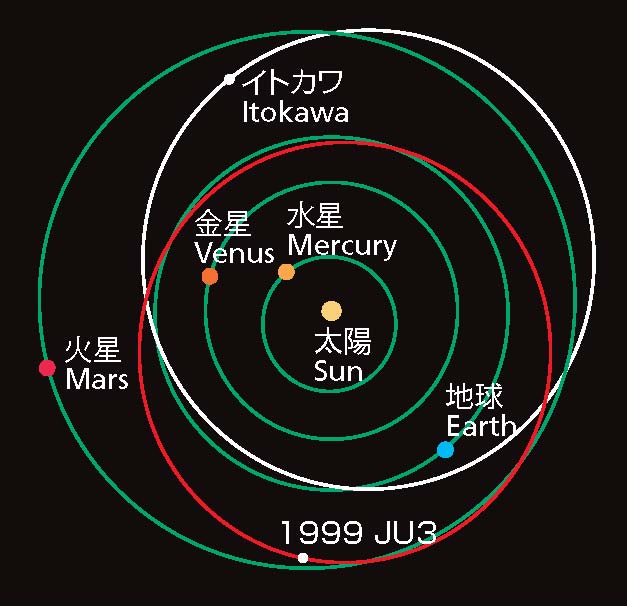 |
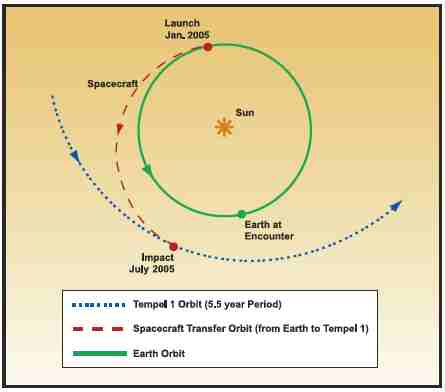 |
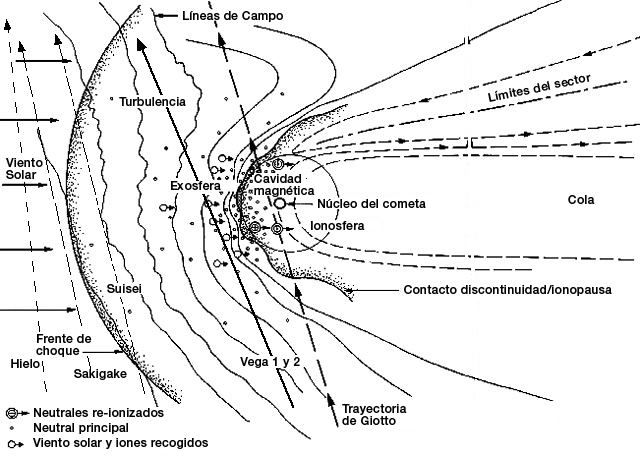 |
|
Orbital and Rotational Characteristics | ||||
| Orbital period: 4.60 years Small axial tilt(< 4°) Eccentricity: 0.08 Inclination: 10.5° |
Vesta-orbital period: ~ 3.36 years 5.34hr rotation Eccentricity: 0.09 Inclination: 7.135° |
Orbital period: ~ 1 year | Orbital period: 5.5 years Eccentricity: 0.517 Inclination: 10.5° |
Orbital period: 76 years Rotational period varies depending on outgassing Eccentricity: 0.967 Inclination: 162.3° |
| Use NASA's NEO Program to plot the orbit of any asteroid or comet | ||||
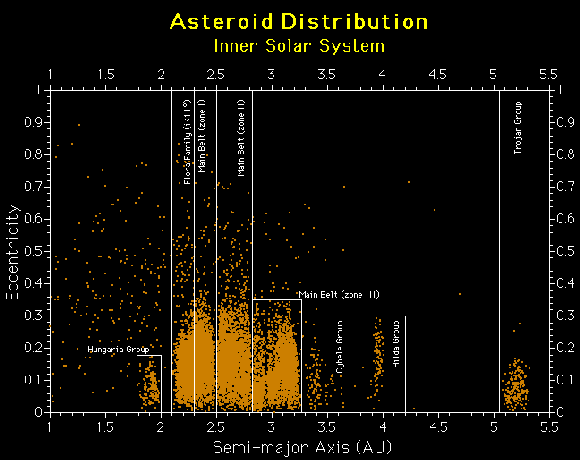 |
 |
|||
Magnetosphere | ||||
| No asteroids have geothermal activity necessary to create a dynamo that can sustain a magnetic field. | Comets appear to have induced magnetospheres from the interaction of the ionic tail with the solar wind. | |||
Atmosphere | ||||
| Possible oxygen/water vapor atmosphere from ice evaporation and outgassing. | No other asteroids have sufficient mass to retain atmospheres. | Dust and ionic tail | Coma primarily vaporized water, carbon monoxide, and carbon dioxide. | |
SurfaceClick on the picture to learn more about the object! | ||||
| Possible cratering; apparent water-bearing minerals. Bright spot of unknown cause. | Dry; cratered with distinctive light/dar areas, lava basins and large impact crater (cuts through crust to mantle) | Tend to be cratered and fractured, with no ice due to proximity to sun. | Icy, covered with dust debris: silicates, carbonates,smectite, carbon and hydrocarbons. | Dusty, non-volatile materials |
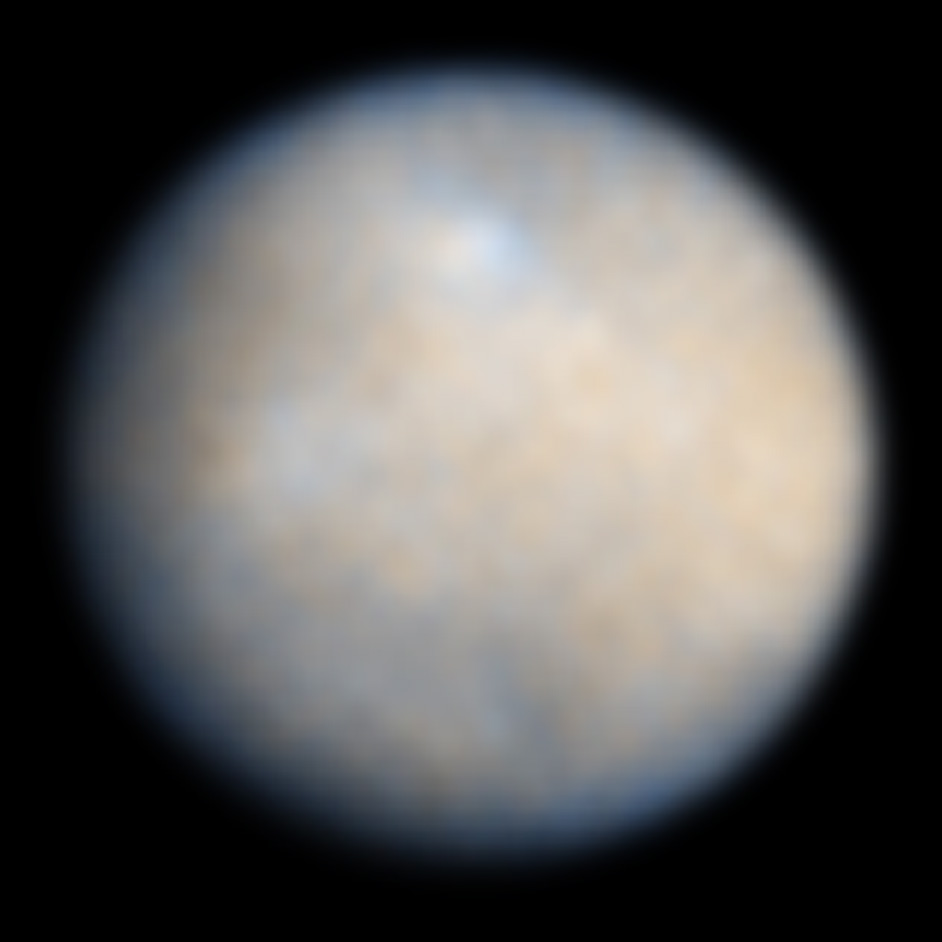 |
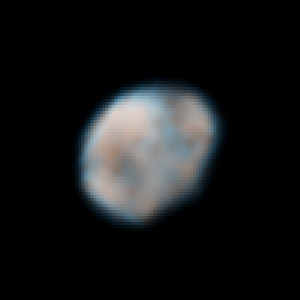 |
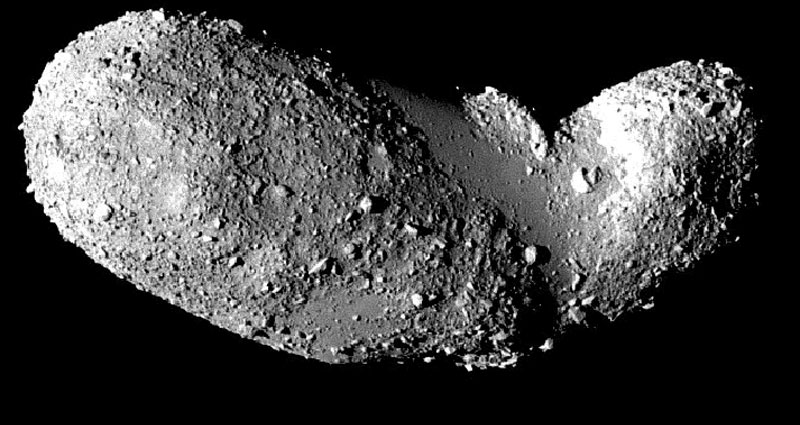 |
 |
 |
Core | ||||
| Based on rotation data, assumed terrestrial structure (rock core, ice mantle, dust crust). | Highly similar to earth; rocky crust, olivine mantle | Various types occur, depending on iron, carbonaceous, icy, or olivine deposits: Itokawa is considered an S-group asteroid, with a primarily siliceous or stony composition | Primarily ice, consistency of a snow bank. | Ices, including water, carbon dioxide, and ammonia, and rocky bits. |
Formation | ||||
| Gravitational collapse of local materials | Possible fragmentation of existing planetesimal | Possible fragmentation of existing planetesimal; composition depends on origin of fragment in original planetesimal (crust = rocky/icy, mantle = olivine, core = iron) | Neptune Oort Cloud | Neptune Oort Cloud, perturbed by Jupiter |
Discussion Questions
- How do asteroids differ from Kuiper Belt objects? Is it just location, or are other factors (composition, size, shape, structure, location) involved?
- How do comets differ from Kuiper Belt objects of similar structure?
Optional Web Reading
- Review past, current, and planned missions to comets at NASA's Comets page. What information did Rosetta collect? Why is it important?
© 2005 - 2024 This course is offered through Scholars Online, a non-profit organization supporting classical Christian education through online courses. Permission to copy course content (lessons and labs) for personal study is granted to students currently or formerly enrolled in the course through Scholars Online. Reproduction for any other purpose, without the express written consent of the author, is prohibited.